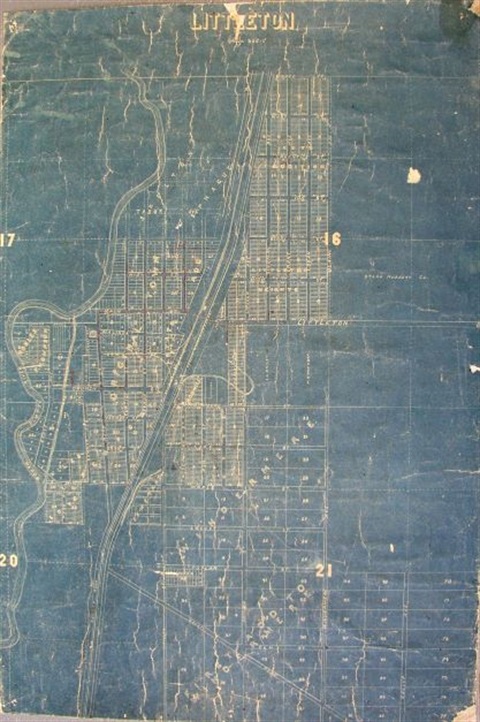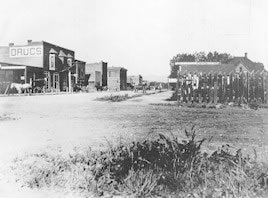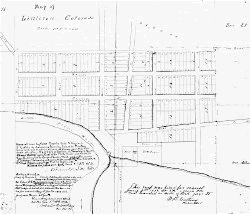General History

The beginnings of Littleton as a community can be traced to the "Pikes Peak" gold rush of 1859. Along with the gold-seekers came merchants and farmers to provide the necessities of life. As the fledgling metropolis of Denver City began to grow, the need arose to construct a series of ditches to carry water to farms and businesses without ready access to rivers and creeks in this arid land. Among the engineers hired to lay out this system was young Richard Sullivan Little of New Hampshire.

Littleton's Main Street, 1890.
Surveying in an area several miles south of Denver, Little fell in love with the site of present-day Littleton. Upon filing a home stake and other land claims, Richard brought his wife Angeline from the East in 1862, the dry climate all but curing her asthmatic condition, and began to farm. The Littles joined with several neighbors to build the Rough and Ready Flour Mill in 1867, providing a solid economic base in the community for years to come.
In 1872, the Littles filed a plat to subdivide much of their property into the village of Littleton. When the Denver and Rio Grande Railroad reached the area in 1871, settlement began at a rapid pace. By the time of Colorado's statehood in 1876, there were schools, churches, a hotel, stores and many of the other trappings of western settlement. In 1890, the 245 residents voted to incorporate the Town of Littleton.

Plat map filed by Richard Little in 1872.
A milestone in the history of Littleton came in 1902 when the old Arapahoe County (dating from pre-Colorado Territory days) was divided into Arapahoe, Denver, Adams, Washington and Yuma Counties. Then-Governor Orman named Littleton the temporary county seat, placing it in a favorable position to defeat rival Englewood in the general election in 1904. Gaining the permanent county seat brought not only government employees and businesses, but all of their support services. Littleton's place among Colorado's cities was assured.
Agriculture remained the staple industry of Littleton until after World War II. Beginning with electronics and pneumatics, moving to munitions and finally to aerospace, manufacturing became the important employer and a magnet for the boom in housing development during the fifties, sixties and seventies. Littleton added Arapahoe Community College in 1965 and Chatfield Reservoir in 1972 to further enhance its appeal.
The Aspen Grove shopping center, at Mineral and Santa Fe, opened in 2001 and was one of metro Denver's first Apple store locations; the Alamo Drafthouse movie theater was the first of this movie chain in the area when it opened in 2013. In 2015 the popular Tattered Cover bookstore opened a branch at Aspen Grove. The development of the old Marathon Oil property near S. Broadway and South Dry Creek Road was a major construction project in Littleton. Ground was broken in 2015 and development continues in 2021. Known as Littleton Village, this area provides hundreds of residential housing units, a park, and some retail establishments.
There was a slowdown in the Littleton economy in 2020-2021 due to the COVID-19 pandemic and resulting statewide restrictions for businesses and the public. The Littleton City Council approved grant programs to local businesses and non-profit organizations to help mitigate economic hardships due to the pandemic.
When Littleton celebrated its centennial in 1990, its population had grown to 33,661. In 2015 the city celebrated the 125th anniversary of its founding. By 2020 the population of Littleton was 48,140.
Bibliography
Hicks, Dave. Littleton From the Beginning. Denver: Egan Printing , 1975.
Littleton Museum. Photographic Archives.
McQuarie, Robert J. and C.W. Buchholtz. Littleton, Colorado: Settlement to Centennial. Littleton: Littleton Historical Museum and Friends of the Library and Museum, 1990.
Photographs courtesy of the Littleton Museum unless otherwise noted. To order copies, contact the museum at 303-795-3950.
Compiled by Pat Massengill
Updated September 2021 by Phyllis Larison